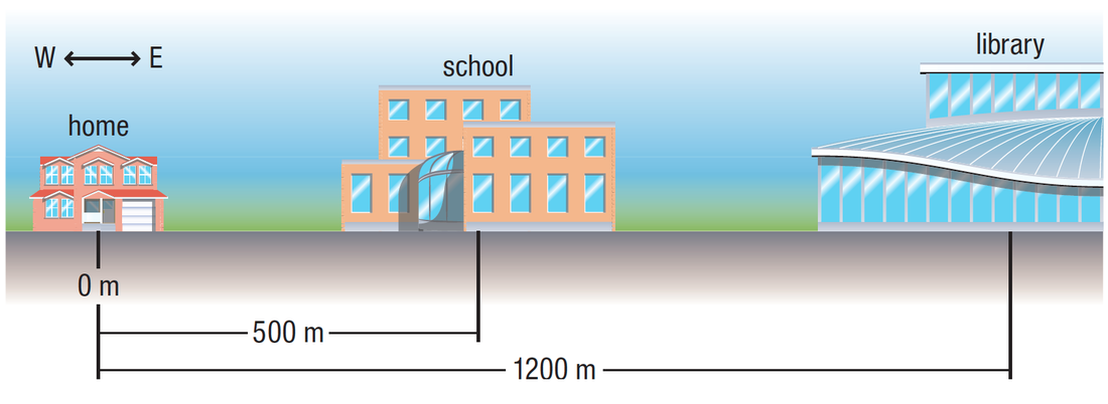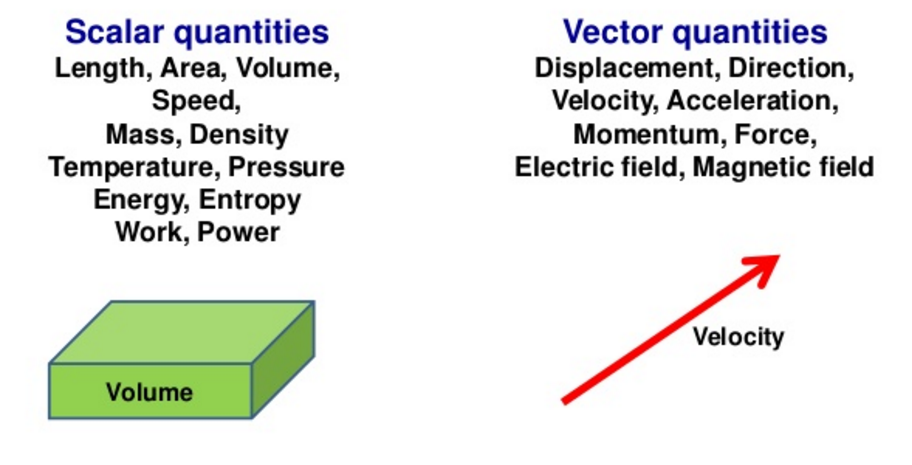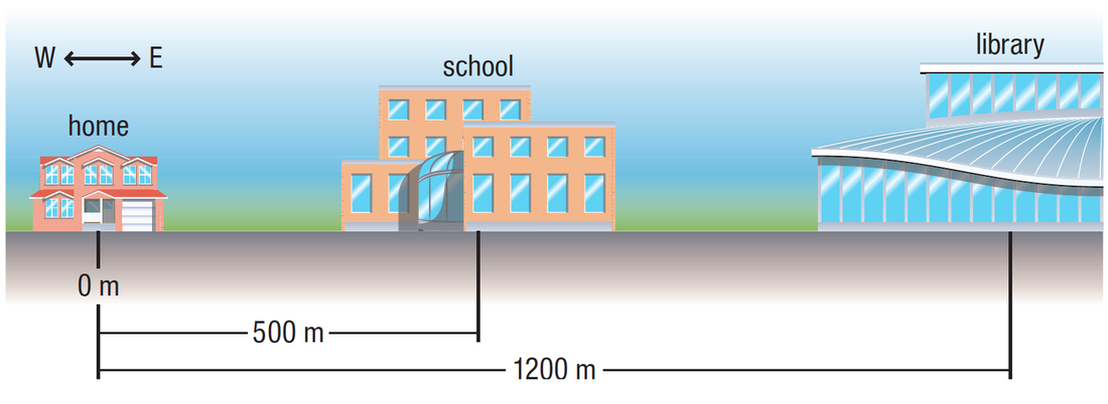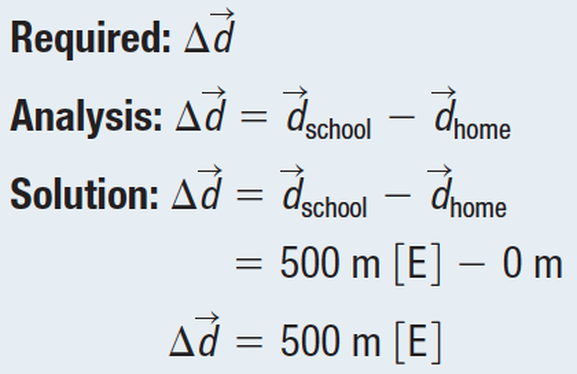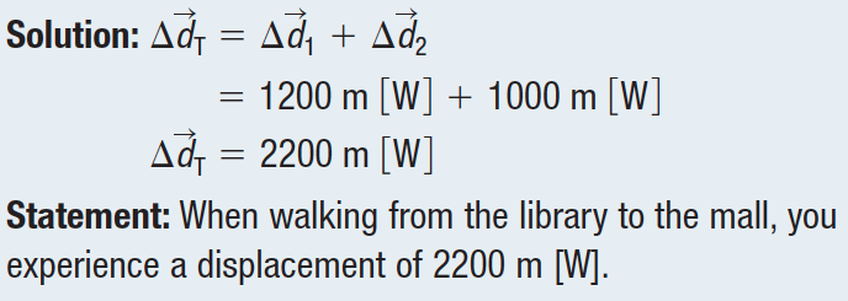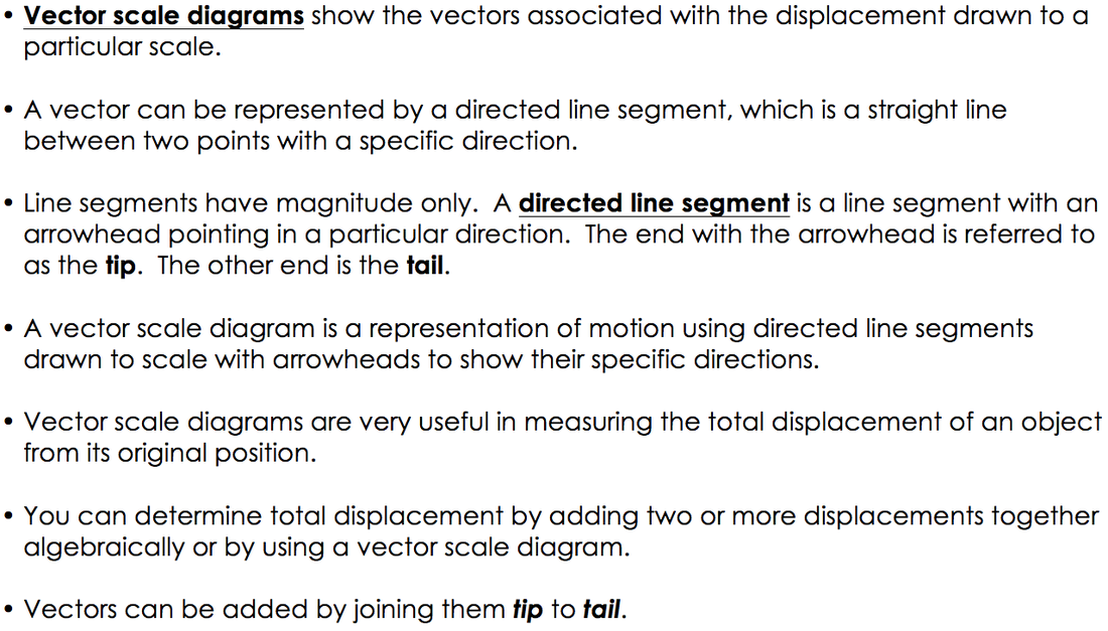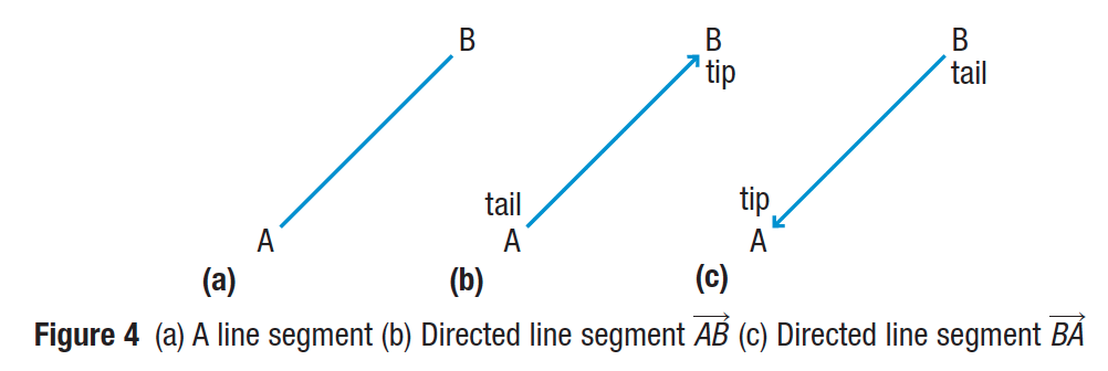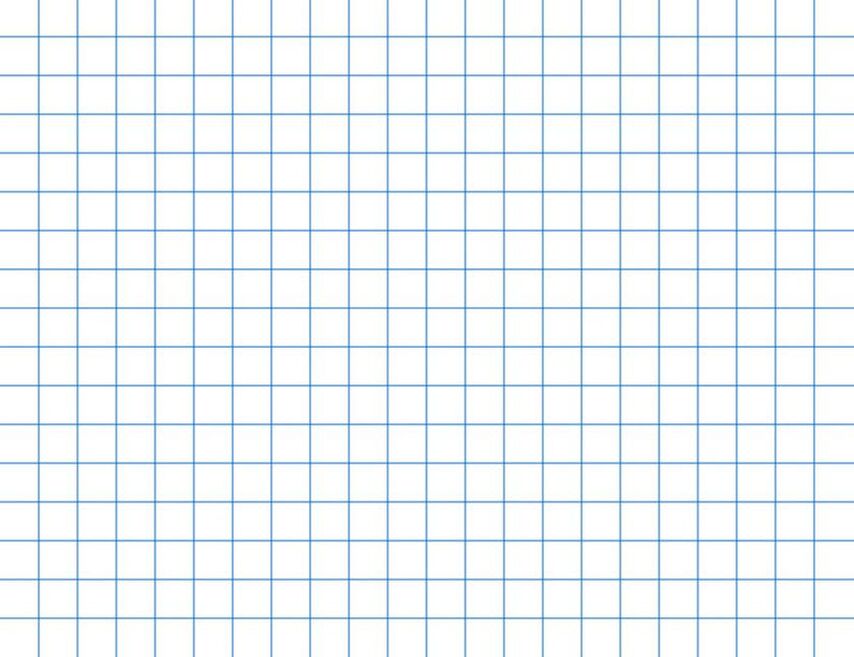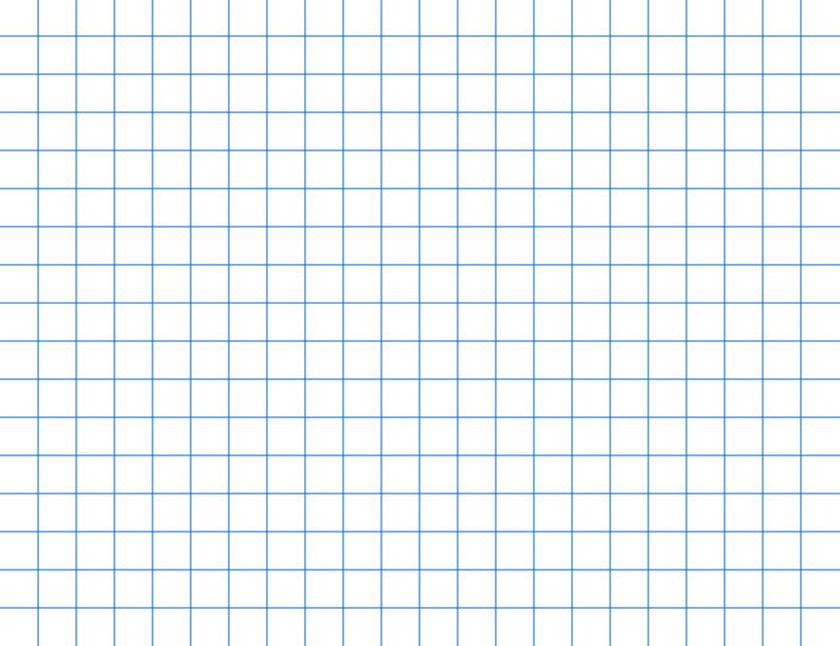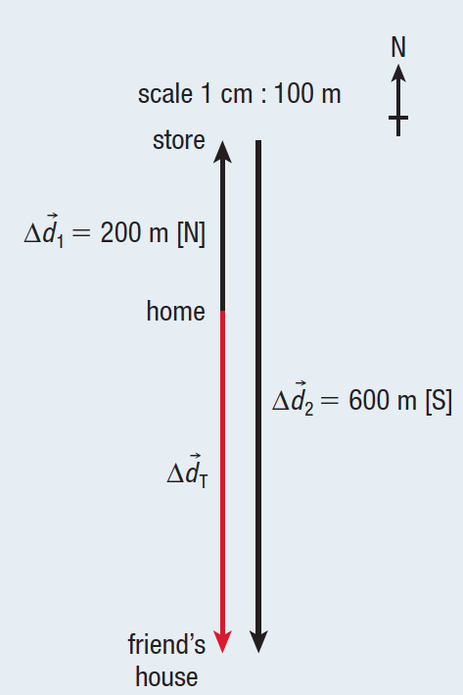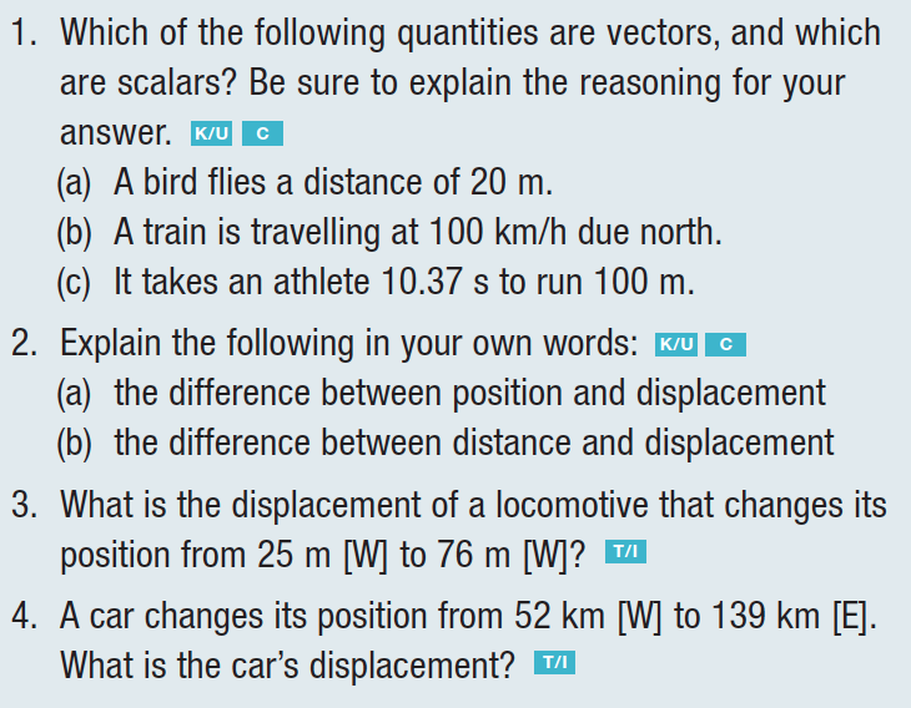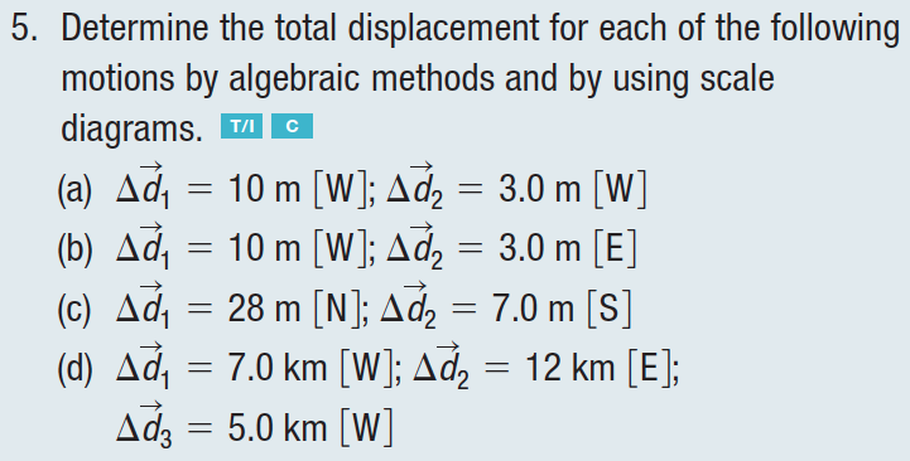lesson 1:
Distance, position, & Displacement
Learning Goals:
1. To learn the meaning of and science behind Kinematics
2. To learn the difference between Scalars and Vectors
3. To learn to difference between Position and Displacement
2. To learn the difference between Scalars and Vectors
3. To learn to difference between Position and Displacement
1. What is Kinematics?
- Direction is important when describing motion.
- If the school in the picture above is your starting point, the library is in a different direction from your school than your home is.
- If the library is your starting point, then your school and home are in the same direction.
2. SCalars & Vectors
Position
- For example, if home is your reference point, the position of the school in the figure above is 500 m [E].
- Note that the magnitude of the position is the same as the straight-line distance (500 m) from home to school, but the position also includes the direction ( East [E]).
- The position of the school from point 0 m can be described by the equation:
Displacement
Sample Problem #1:
Calculating Displacement by Vector Subtraction
Calculating Displacement by Vector Subtraction
Imagine that you walk from home to school in a straight-line route. What is your displacement?
Solution: Home is the starting point for your journey. When you are at home, your position has not changed. Therefore, your initial position is zero. Your school has a position of 500 m [E] relative to your home.
Answer:
Sample Problem #2:
Calculating Total Displacement by Vector Addition
Calculating Total Displacement by Vector Addition
One night after working at the library, you decide to go to the mall. What is your total displacement when walking from the library to the mall?
Answer:
Vector Scale Diagrams
Sample Problem #3:
Calculating Total Displacement using
Vector Scale Diagrams
Calculating Total Displacement using
Vector Scale Diagrams
Try it below:
Answer:
Sample Problem #4:
Calculating Total Displacement using Vector Scale Diagrams for Two Motions in Opposite Directions
Calculating Total Displacement using Vector Scale Diagrams for Two Motions in Opposite Directions
Imagine that you are going to visit your friend. Before you get there, you decide to stop at the variety store. If you walk 200 m [N] from your home to the store, and then travel 600 m [S] to your friend’s house, what is your total displacement?
Try it below:
Answer:
REMEMBER: G.R.A.S.S
Given
Required
Analysis
Solution
Statement
Quizlet: Lesson 1
Learn all about Distance, Position, and Displacement on Quizlet!






